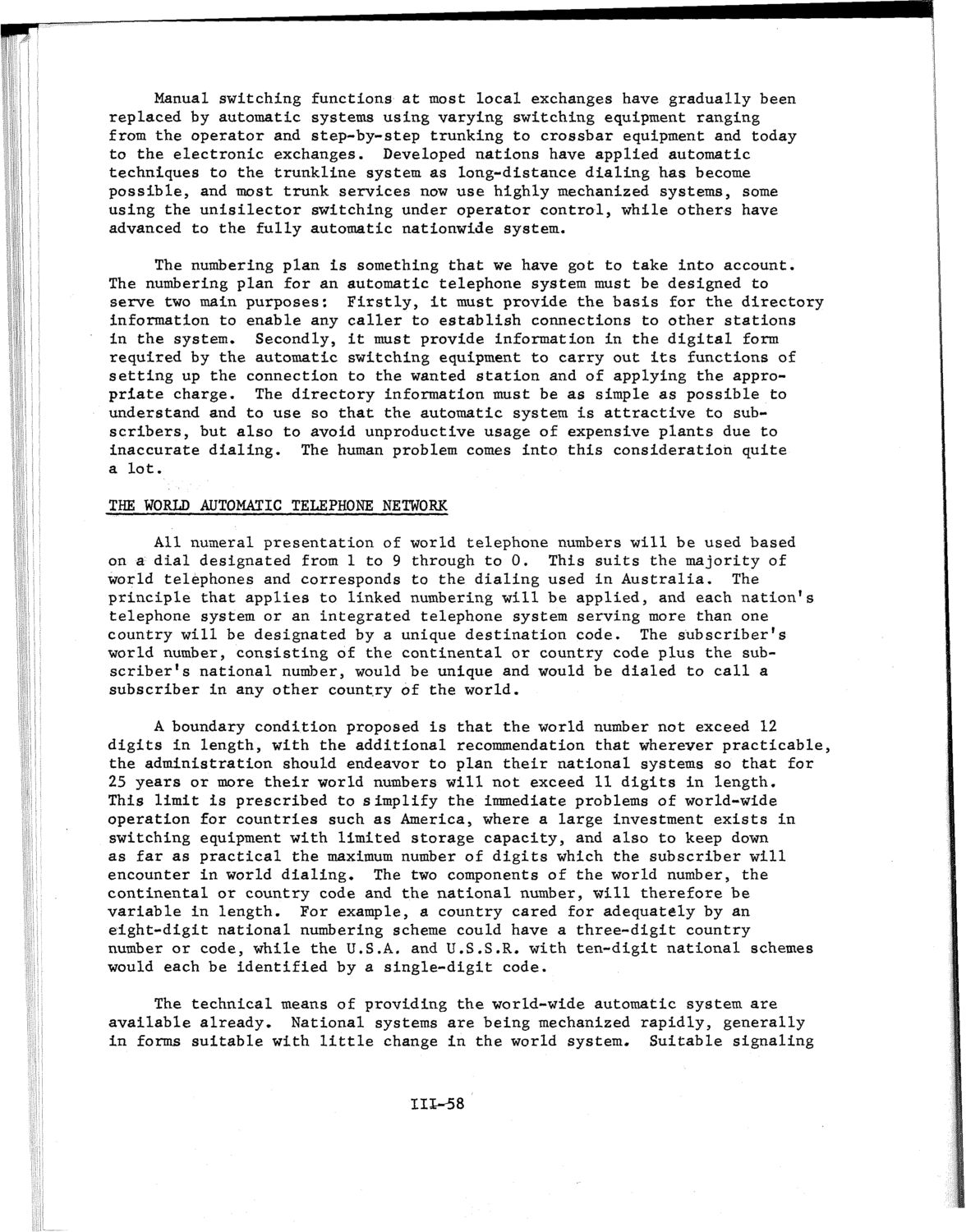| |
| |
Caption: SWE - Proceedings of the First International Conference of Women Engineers and Scientists
This is a reduced-resolution page image for fast online browsing.

EXTRACTED TEXT FROM PAGE:
Manual switching functions at most local exchanges have gradually been replaced by automatic systems using varying switching equipment ranging from the operator and step-by-step trunking to crossbar equipment and today to the electronic exchanges. Developed nations have applied automatic techniques to the trunkline system as long-distance dialing has become possible, and most trunk services now use highly mechanized systems, some using the unisilector switching under operator control, while others have advanced to the fully automatic nationwide system. The numbering plan is something that we have got to take into account. The numbering plan for an automatic telephone system must be designed to serve two main purposes: Firstly, it must provide the basis for the directory information to enable any caller to establish connections to other stations in the system. Secondly, it must provide information in the digital form required by the automatic switching equipment to carry out its functions of setting up the connection to the wanted station and of applying the appropriate charge. The directory information must be as simple as possible to understand and to use so that the automatic system is attractive to subscribers, but also to avoid unproductive usage of expensive plants due to inaccurate dialing. The human problem comes into this consideration quite a lot. THE WORLD AUTOMATIC TELEPHONE NETWORK All numeral presentation of world telephone numbers will be used based on a dial designated from 1 to 9 through to 0. This suits the majority of world telephones and corresponds to the dialing used in Australia. The principle that applies to linked numbering will be applied, and each nation's telephone system or an integrated telephone system serving more than one country will be designated by a unique destination code. The subscriber's world number, consisting of the continental or country code plus the subscriber's national number, would be unique and would be dialed to call a subscriber in any other country of the world. A boundary condition proposed is that the world number not exceed 12 digits in length, with the additional recommendation that wherever practicable, the administration should endeavor to plan their national systems so that for 25 years or more their world numbers will not exceed 11 digits in length. This limit is prescribed to simplify the immediate problems of world-wide operation for countries such as America, where a large investment exists in switching equipment with limited storage capacity, and also to keep down as far as practical the maximum number of digits which the subscriber will encounter in world dialing. The two components of the world number, the continental or country code and the national number, will therefore be variable in length. For example, a country cared for adequately by an eight-digit national numbering scheme could have a three-digit country number or code, while the U.S.A. and U.S.S.R. with ten-digit national schemes would each be identified by a single-digit code. The technical means of providing the world-wide automatic system are available already. National systems are being mechanized rapidly, generally in forms suitable with little change in the world system. Suitable signaling 111-58
| |